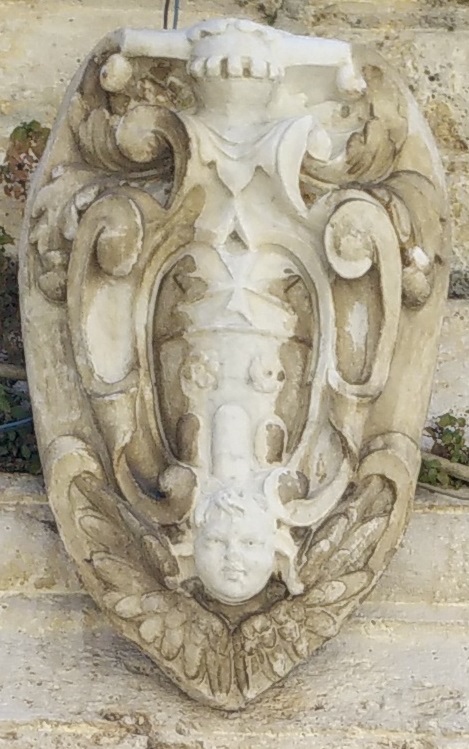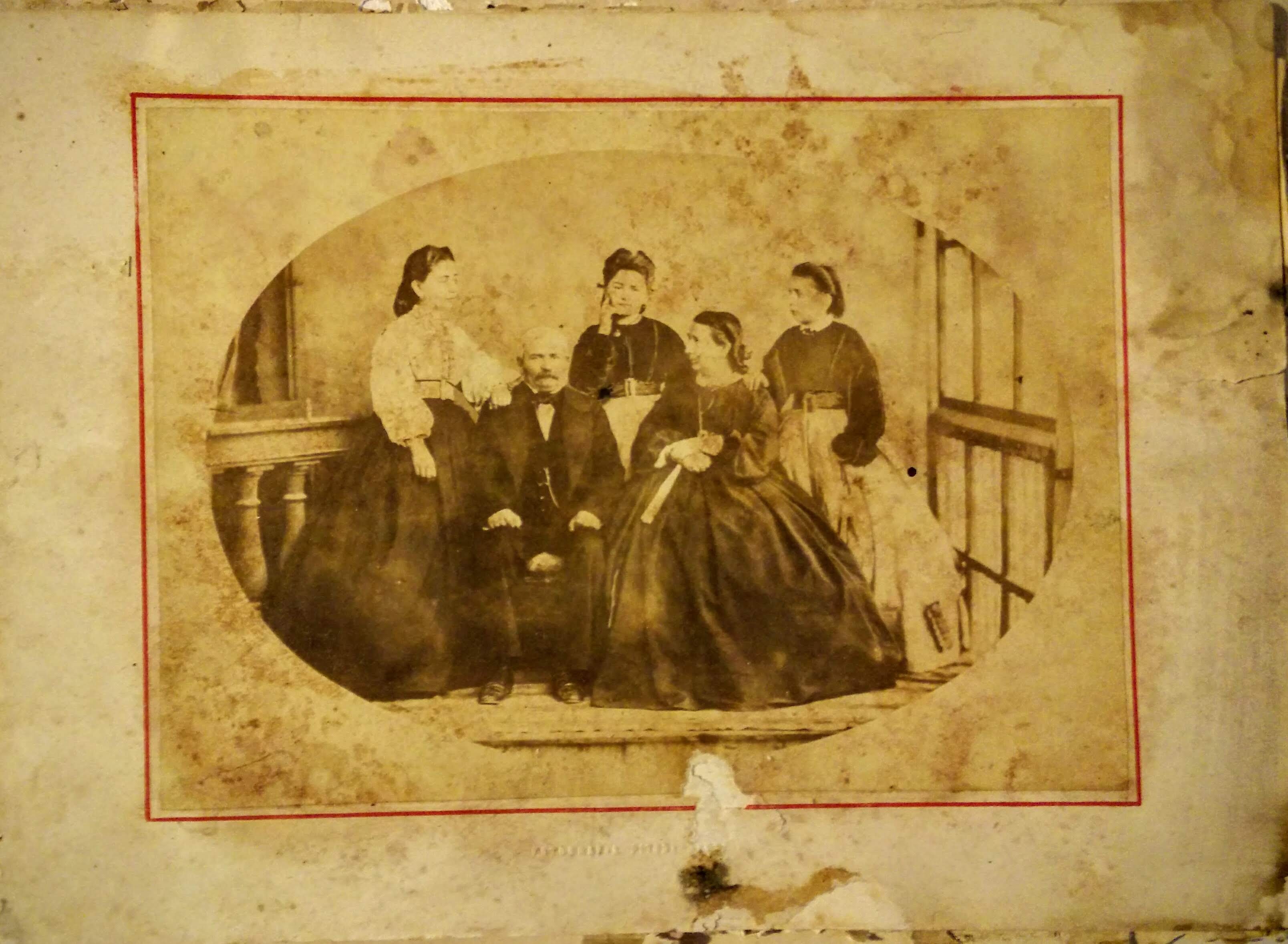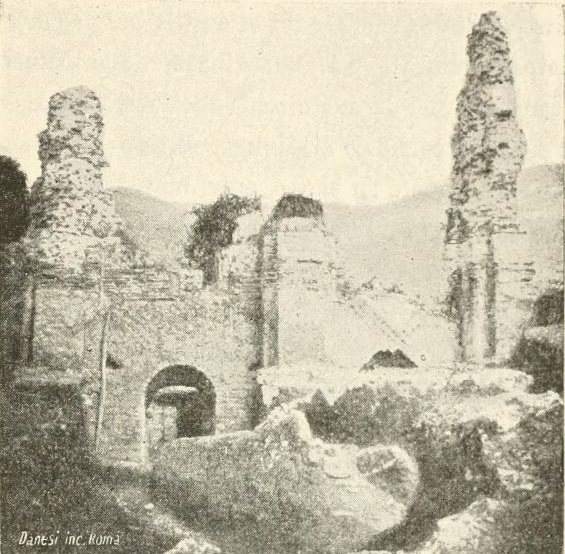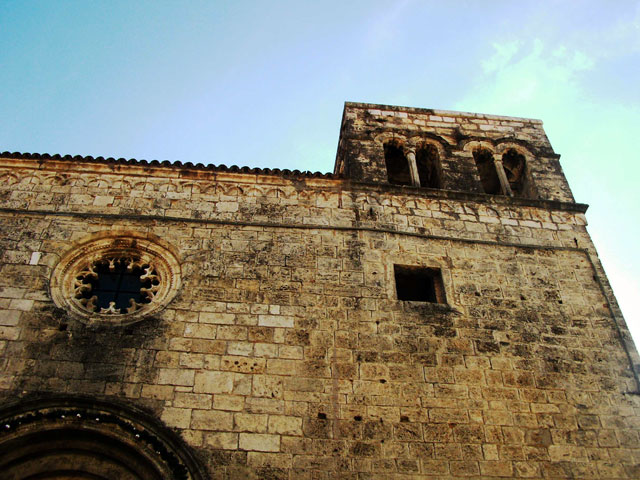Un archivista del passato: domino Alimonte Bonafaccia e il libro di caducità.
Libro nel Quale sonno annotate tutte le Caducità spettanti
alla Compagnia del Santissimo Salvatore ad S[anc]ta S[anc]tor[um] et suoi
Hospitali di Roma ...
fatto sotto il governo dell´Illustrissimi Signori
Geronimo Mignanelli,
Mario Cenci e
Ludovico Mattei: guardiani,
et
Gasparo Albero: Camerlengo di detta Compagnia
da me Alimonte Bonafaccia Archivista ~
Civitas Ducalis, 1 dicembre 1628
Nel luglio del 2004 a Londra da Christie's fu venduto questo libro, dopo poco tempo fui contattato
da un antiquario di Londra tramite un mio sito su Cittaducale,
proponeva l'acquisto di quel libro a qualcuno interessato all'argomento,
lo misi in contatto con uno storico di Rieti (il compianto Prof. Andrea di Nicola)
ma in seguito accertai che il libro era stato venduto
alla biblioteca BANCROFT di Berkeley in California, dove attualmente risulta consultabile (link)
Da "preziosi " dell' Archivio di Stato (link) si constata che nel 1628 sono citati i guardiani e il camerlengo.

Un libro del 1677 di Gio: Domenico Maoro Cosentino parla della:
Descrittione della chiesa ... del Santissimo Salvatore della Corte di Roma
viene citato in questo libro il Vescovo Giulio Antonio Santoro Casertano, nipote del Cardinale di S. Severina Giulio Antonio Santoro (Google books)

Chiesa di S. Maria dei Raccomandati a Cittaducale, portale e campanile.
-
Nel 2013 viene diffuso uno studio della Dott.ssa Isabella Rossi :L' ospedale della chiesa di Santa Maria dei Raccomandati (Academia.eu )
-
La famiglia Bonafaccia a Cittaducale

Stemma sul portone del palazzo Bonafaccia-Maoli.
-
-
1619 dagli atti del notaio Nicola Brunori risulta un testimone di nome dottor Pirro Bonafaccia (Archivio di Stato dell' Aquila) potrebbe trattarsi del padre di Alimonte. Si trova anche citato in data 1594 ( Googlebooks)
-
1821 don Antonio Bonafaccia citato in un documento ( OPAC SBN),
-
1909 Emma in Giampietri-Leoni , Luisa, Cesare ed Auguso Bonafaccia citati in documento ( OPAC SBN) ed altri documenti.


Foto della famiglia Bonafaccia a Cittaducale, probabilmente agli inizi del 1900, tra le persone rappresentate forse i fratelli Emma, Luisa,Cesare ed Augusto Bonafaccia ( per cortesia di Sante S.).

L' Avv. Augusto Bonafaccia è citato (pag 156) come proprietario del podere Ortali nel libro
Viaggio archeologico sulla via Salaria nel circondario di Cittaducale : con appendice sulle antichità dei dintorni e tavola topografica
by Persichetti, Niccolò, 1849-1915 (archive.org)
|
|
Il Libro di caducità: la Chiesa dei Raccomandati a Cittaducale (descrizione del libraio di Londra)
Domino Alimonte Bonafaccia de Civitate Ducali Iuris Utriusque Doctore
This book records bequests to the Compagnia del Santissimo Salvatore ad
Sancta Sanctorum, also known as the Compagnia or Confraternita dei
Raccomandati del Salvatore, a charitable brotherhood which for many
centuries (till its dissolution in 1804) maintained hospitals and hostels by
the basilica of San Giovanni in Laterano, the church of the bishop of Rome.
These buildings were strategically placed just inside the main entrance to
Rome from the south, the Porta S. Giovanni, to minister specially to
pilgrims. The present Ospedale di S. Giovanni, still on the site opposite
the basilica, is an amalgam of several foundations, the oldest dating from
1216 and placed in the hands of the Confraternity in 1276, thenceforth known
as the Spedale del Salvatore. A thirteenth-century portico remains part of
the hospital, which was largely rebuilt to designs by Giacomo Mola between
1630 and 1636, shortly after this register was started. Besides care of the
ill, frail and poor, the confraternity had charge of the private chapel of
the pope (S. Lorenzo, or Sancta Sanctorum) on the other side of the Piazza
S. Giovanni, and its famous acheropita, the picture of Christ `not made by
hand´, whence the Salvatore of their name and the address ad Sancta
Sanctorum. Their great economic power is attested from earliest times and
amply evidenced in this book, entitled Libro di Caducità, or `Book of
Windfalls´.
The hospital was governed by curators, Guardiani, the chief of whom
was called the chamberlain or Camerlengo. The title page of the register,
dated 1 December 1628, lists the names of the current curators, whose arms
adorn the front cover below an image of the acheropita:
Fol. 2 title: ...Libro nel Quale sonno annotate tutte le Caducità spettanti
alla Compagnia del Santissimo Salvatore ad S[anc]ta S[anc]tor[um] et suoi
Hospitali di Roma ... fatto sotto il governo dell´Illustrissimi Signori
Girolamo Mignanelli,
Mario Cenci,
Luduico Matthei Guardiani, et
Gasparo Albero Camorlengo di detta Compagnia da me
[signature]
Alimonte Bonafaccia Archivista
~
(The writing in black ink has penetrated the page and offset from the verso
on to the next blank recto, giving a faint impression of the original
title-page, minus the red letters.) The archivist Alimonte Bonafaccia was a
doctor of laws from Cittaducale (in Lazio, Provincia di Rieti), as we learn
from a document of 1634 drawn up in connexion with the building campaign
(Curcio, p. 129B). Indeed the register itself may have been compiled with
that campaign in prospect, to give an accurate assessment of the Compagnia´s
resources.
The gifts, all presumably written in Bonafaccia´s careful hand, are
occasionally annotated in another hand with the outcome of the donation,
e.g. the first page headed `A´ has a note of the donation by Agnese de´
Rosci (i.e. Rossi) of the right of presentation to a chaplaincy of the
chapel of the Trinity in Sant´ Eustachio, with the marginal note: `Habuit
effectum pro parte DD (Dominorum) Custodum´, `[the gift] has been put into
effect by the Guardians´. This shows that for all its elaborate binding and
fair hand, the register was a working tool of the confraternity
administration. The donations typically dispose by testament of the donor´s
goods (`robba´), or a share in them, if his or her direct heirs are without
issue at death. Often the gift is of real estate, say half of a house or a
vineyard. The donors seem to come from all walks of life, though perhaps
preponderantly of the humbler sort, many of them women. Antonia Baroncelli
(A1r) gives her estate to San Giovanni Laterano on condition that they give
the Compagnia `ogn´anno una salma di mosto´, a salma (a liquid measure of
some 275 litres) of grape juice every year, from vineyards outside the
Lateran gate-a reminder of how rustic Rome still was in early modern times.
Overleaf Antonia Pierleoni gives `certain slabs for selling fish in the
fishmarket´, and Antonia Luppoli `every year in perpetuity a pound of white
wax´ (A1v, top and bottom). None of the donations is dated but the presence
of `Illustrissimo Everso conte dell´Anguillara´ on A2r, who left money which
enabled major rebuilding of the hospital in 1360, suggests that this is a
fair copy consolidating all previous bequests still in effect. The listing
of names (and often occupations) gives ample scope for research into the
social history of charity in late medieval and early modern Rome.
Giovanna Curcio, `L´Ospedale di San Giovanni in Laterano´, Storia dell´arte,
32 (1978), 23-40, and 36-37 (1979), 103-30 gives a very detailed building
history.
- See also Alessandro Canezza, Gli arcispedali di Roma nella vitacittadina, Rome, 1933, pp. 175-202.
- For the remnant of the hospital archivesin the Archivio di Stato, Roma,see Guida generale degli Archivi di Stato,
- Rome, 1981-94, iii, p. 1226. Giuseppe Vasi, Sulle magnificenze di Roma
antica e moderna, 10 vols, 1747-61, book ix, pl. 172, shows the hospital,
online at www.romeartlover.it/Vasi172.htm. Roma
Contents:
Fol. 2r-v: blank; fol. 3r: "[dedication] In Nome Del Santissimo Salvatore Amen. [date] A di Primo di Decembre 1628. [text] Libro nel quale sonno annotate tutte le Caducità spettanti alla Compagnia del Serenissimo Salvatore ad Sancta Sanctorum et suoi Hospitali di Roma ... verrano fatto sotto il governo dell' Illustrissimi Signori Girolamo Mignanelli, Mario Cenci, Ludvico Matthei Guardiani, et Gasparo Albero Camorlengo di detta Compagnia da me. [signature] Alimonte Bona Faccia Archivista;
fol. 3v-4v: blank;
fol. 5r-8v: names beginning with "A";
fol. 9r-14v: blank;
fol. 15r-16v: names beginning with "B";
fol. 17r-21v: blank;
fol. 22r-v: names beginning with "C"; fol. 23r-27v: blank; fol. 28r: names beginning with "D"; fol. 28v-32v: blank; fol. 33r: names beginning with "E"; fol. 33v-37v: blank; fol. 38r-39r: names beginning with "F"; fol. 39v-43v: blank; fol. 44r-47r: names beginning with "G"; fol. 47v-52v: blank; fol. 53r-v: names beginning with "I"; fol. 54r-57v: blank; fol. 58r-59r: names beginning with "L"; fol. 59v-62v: blank; fol. 63r-64r: names beginning with "M"; fol. 64v-69v: blank; fol. 70r-v: names beginning with "N"; fol. 71r-74v: blank; fol. 75r: names beginning with "O"; fol. 75v-78v: blank;
(Cont.) fol. 79r-81r: names beginning with "P"; fol. 81v-85v: blank; fol. 86r: letter "Q" written but no names listed; fol. 86v-88v: blank; fol. 89r-90r: names beginning with "R"; fol. 90v-93v: blank; fol. 94r-v: names beginning with "S"; fol. 95r-98v: blank; fol. 99r: names beginning with "T"; fol. 99v-103v: blank; fol. 104r: names beginning with "V"; fol. 104v-192v: blank.
|









